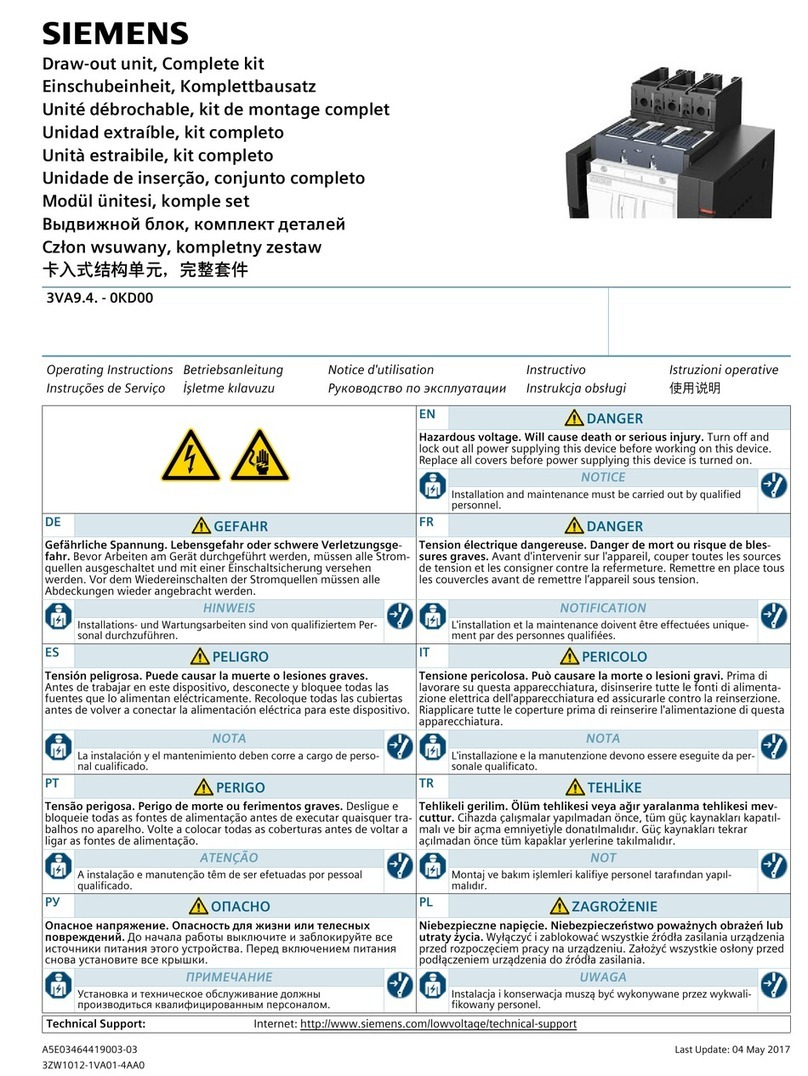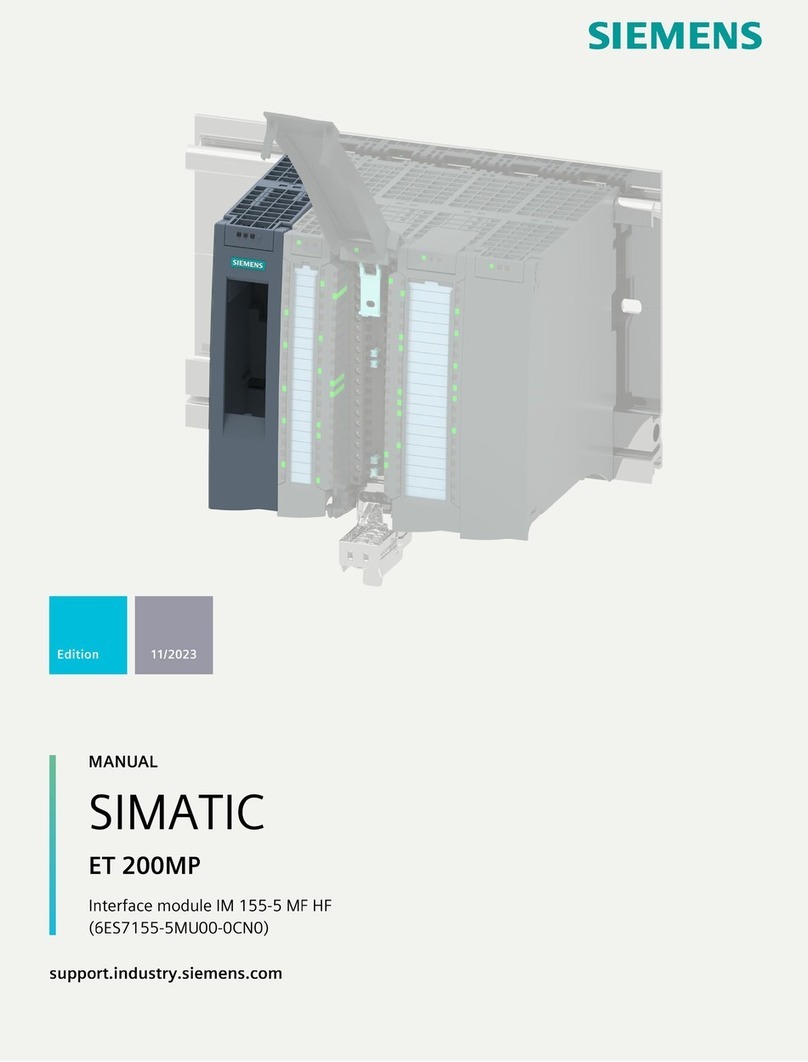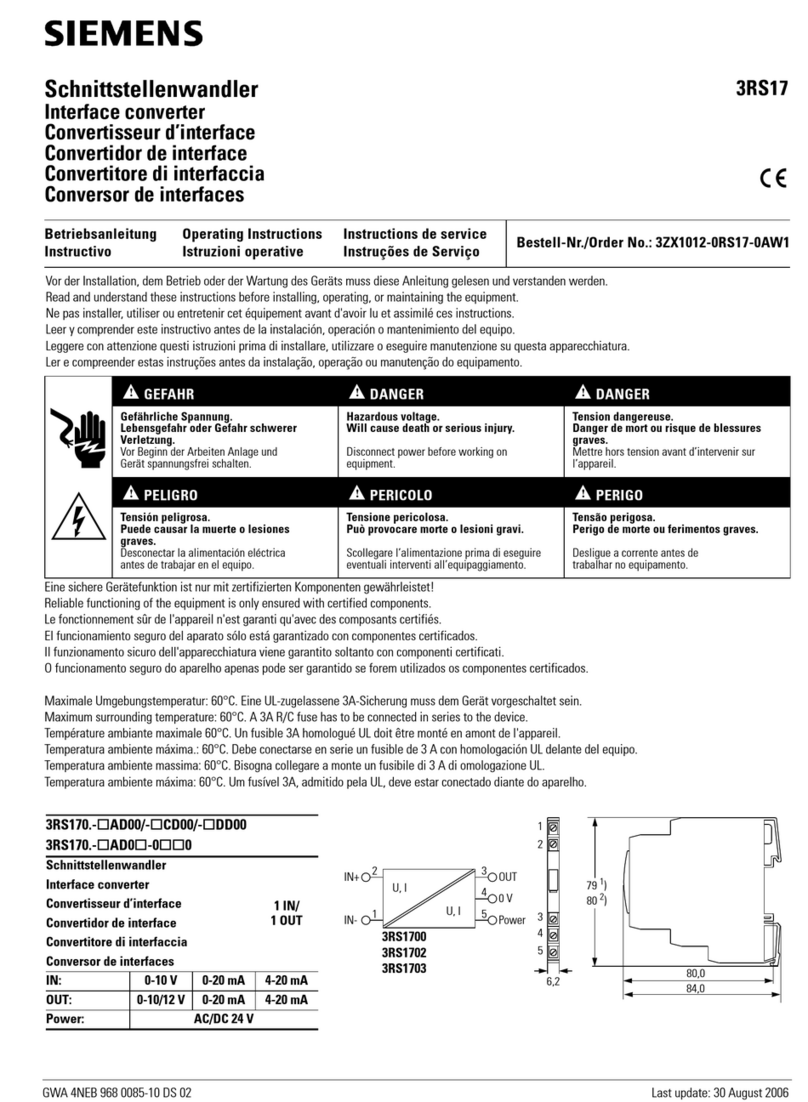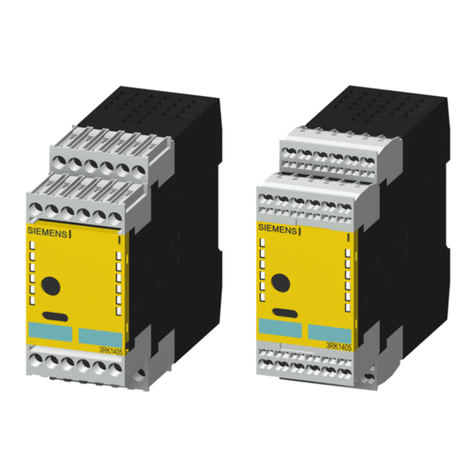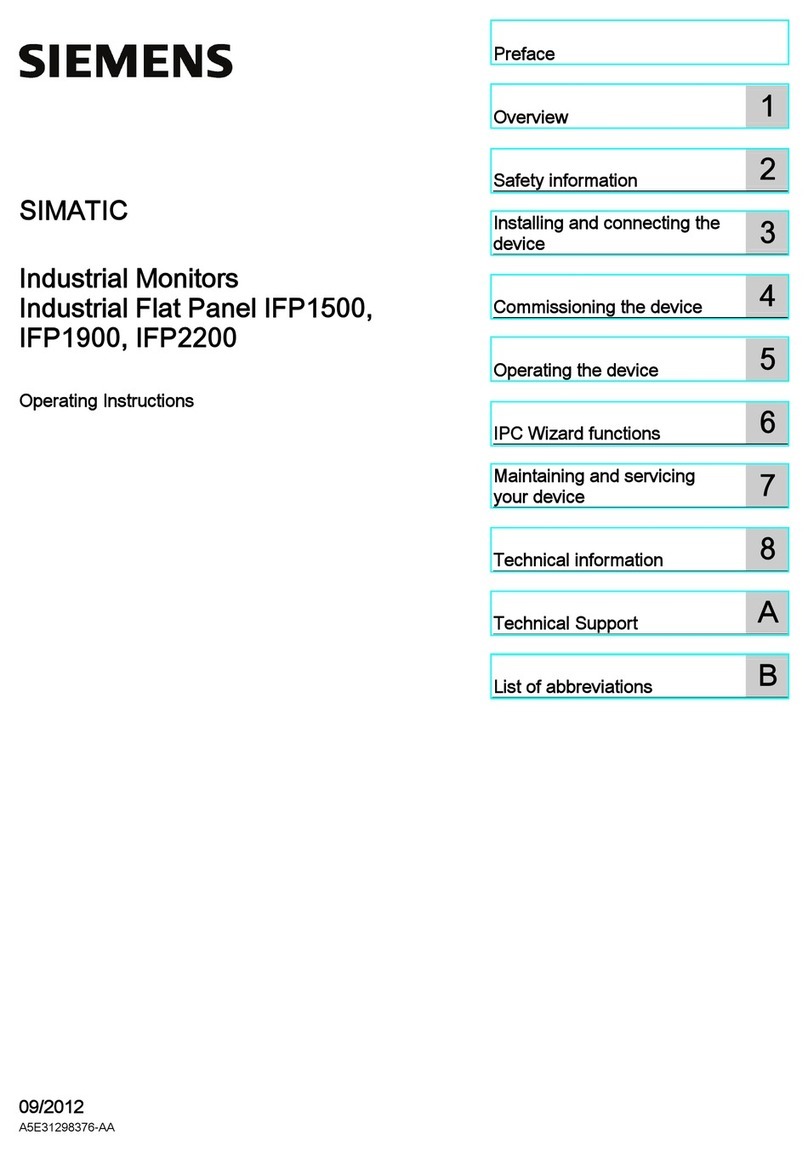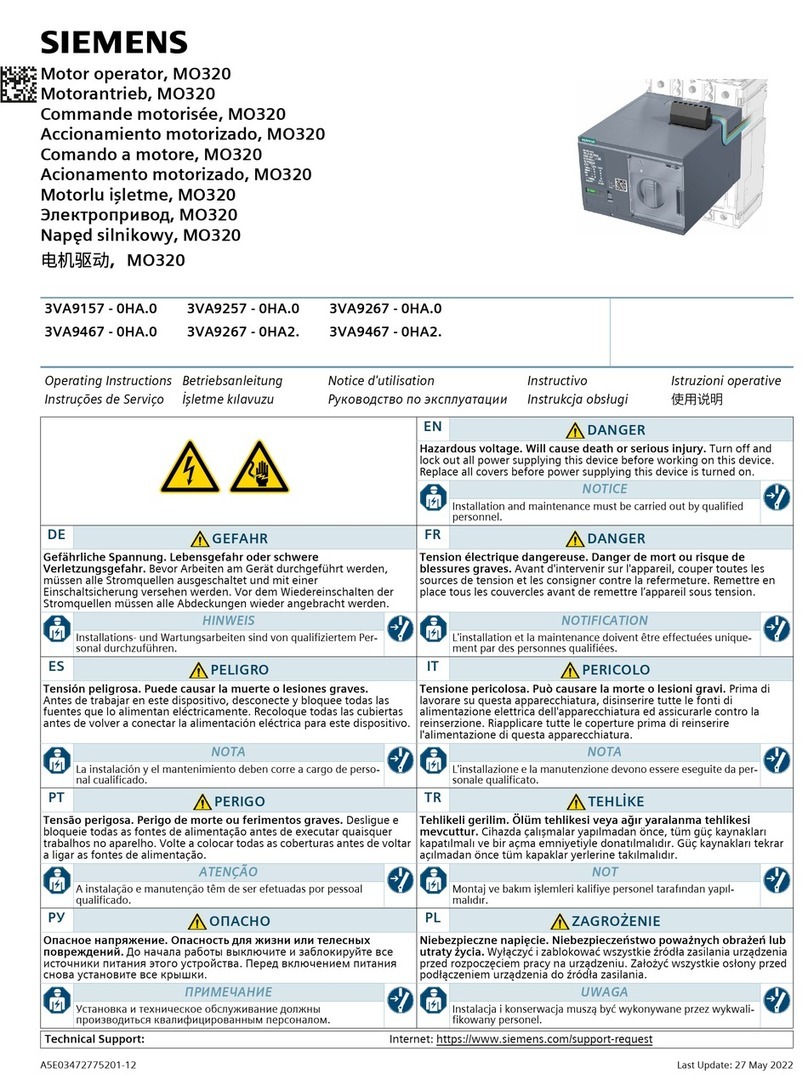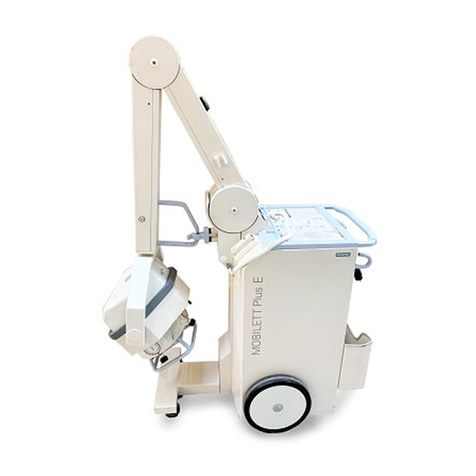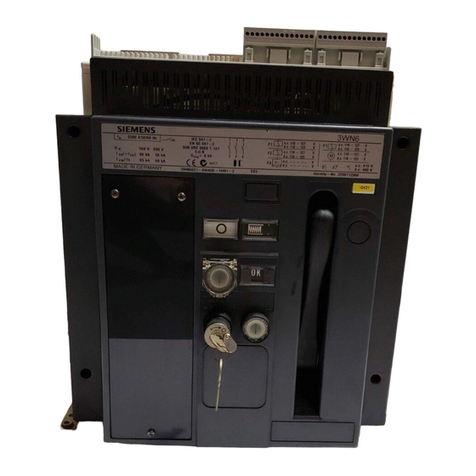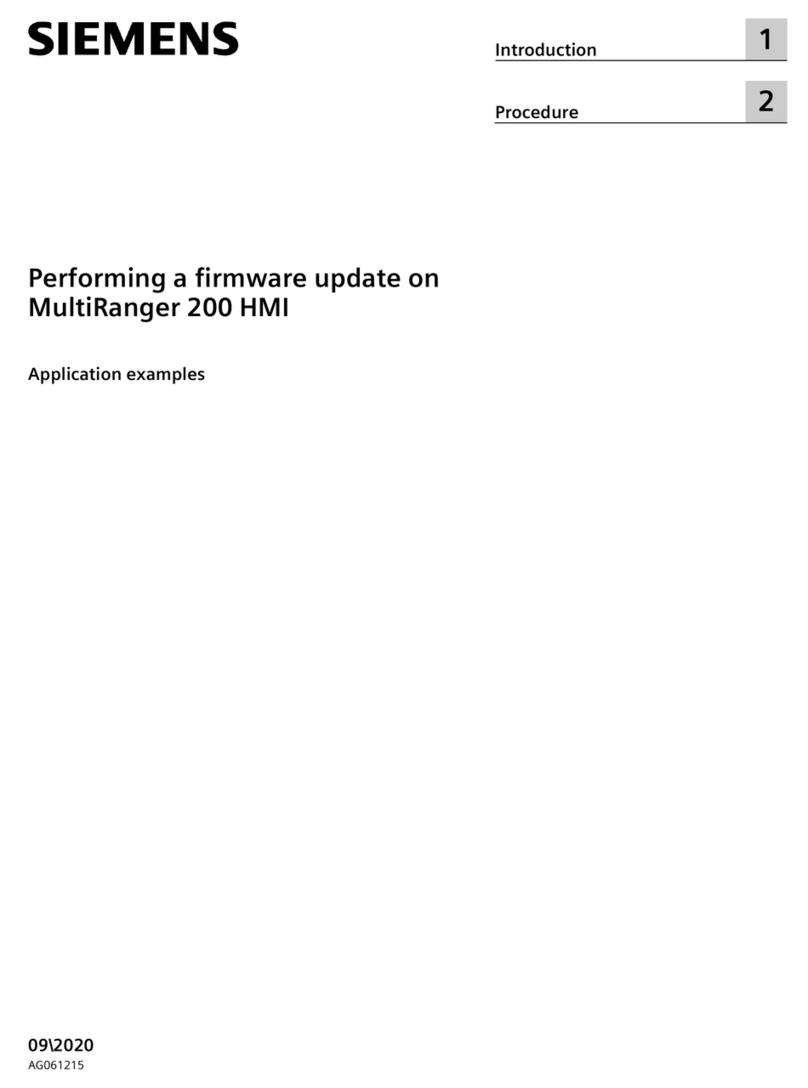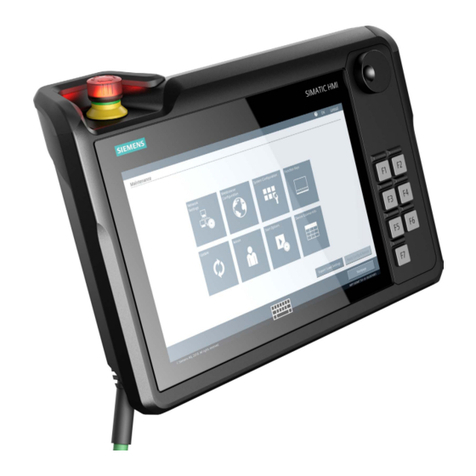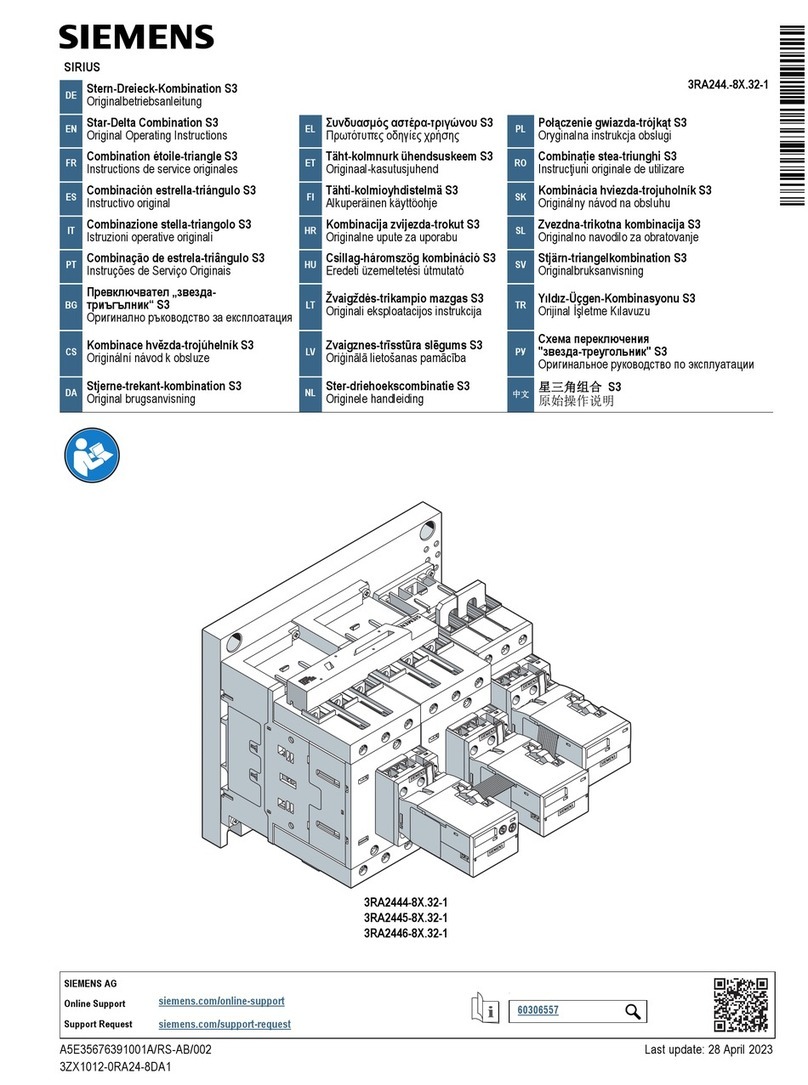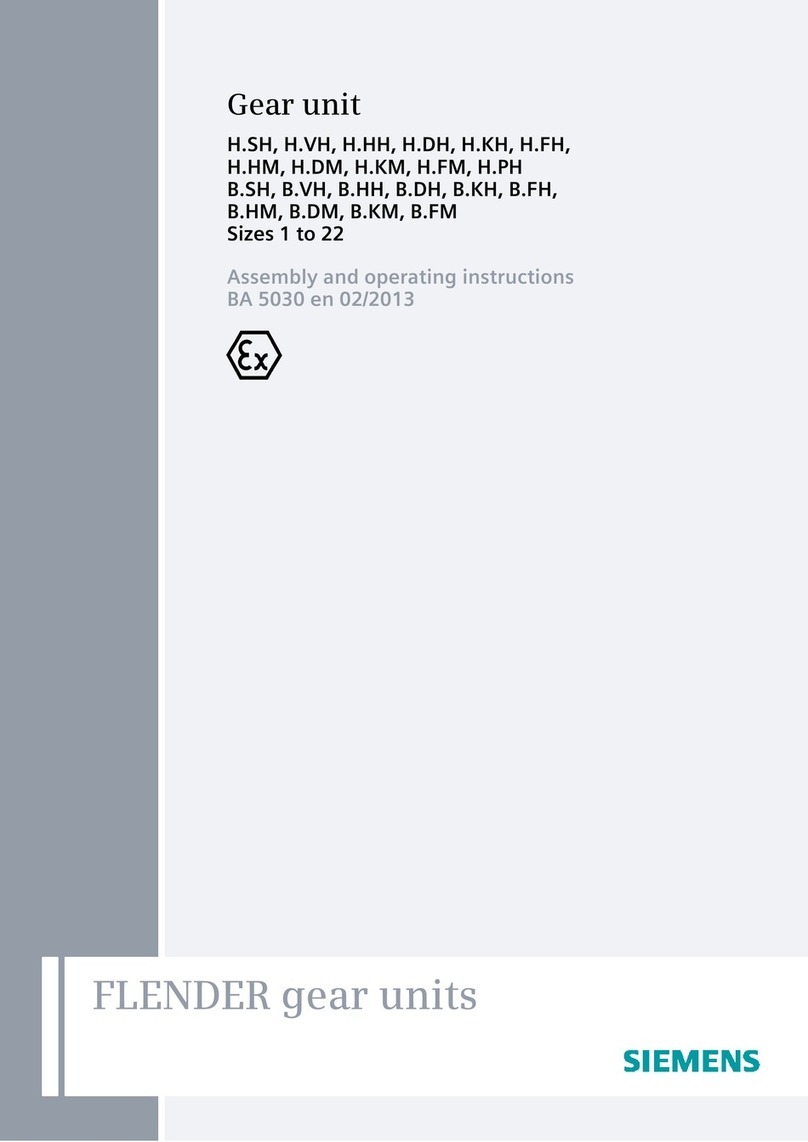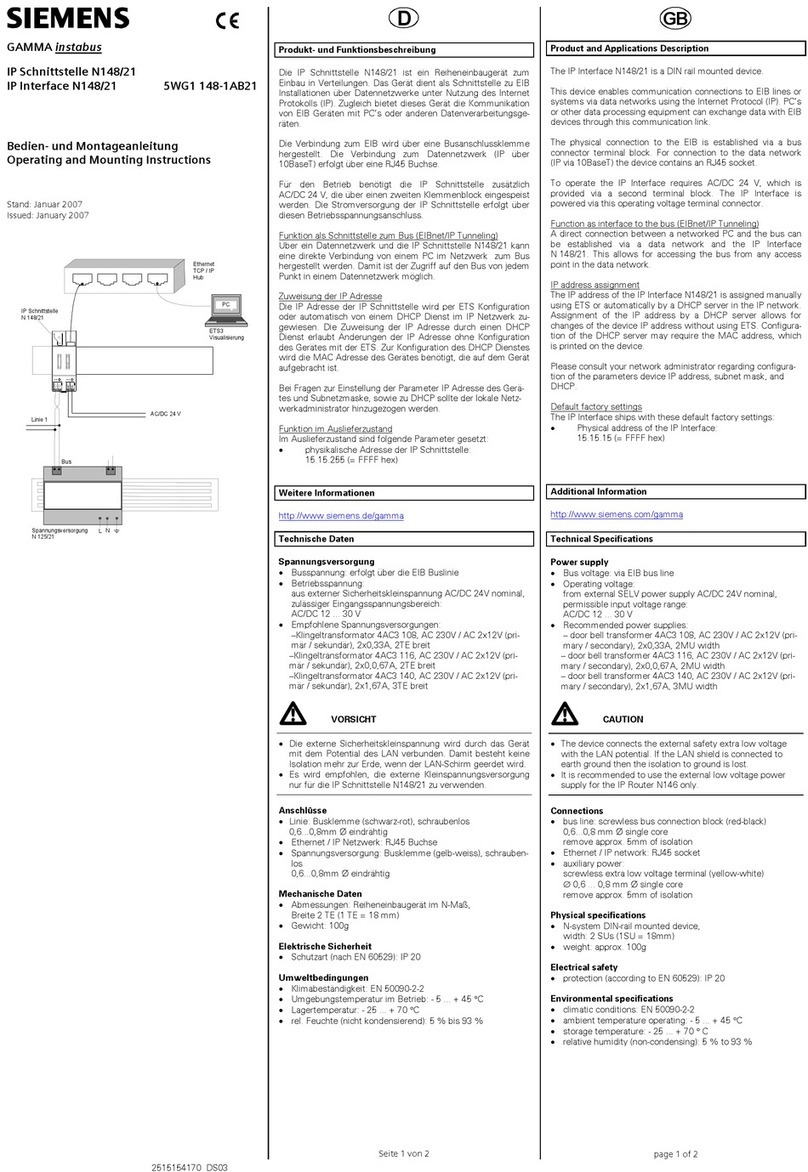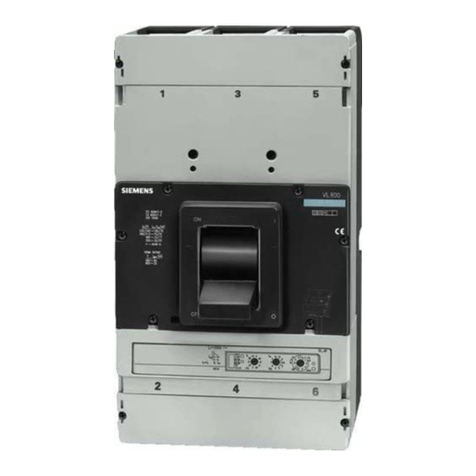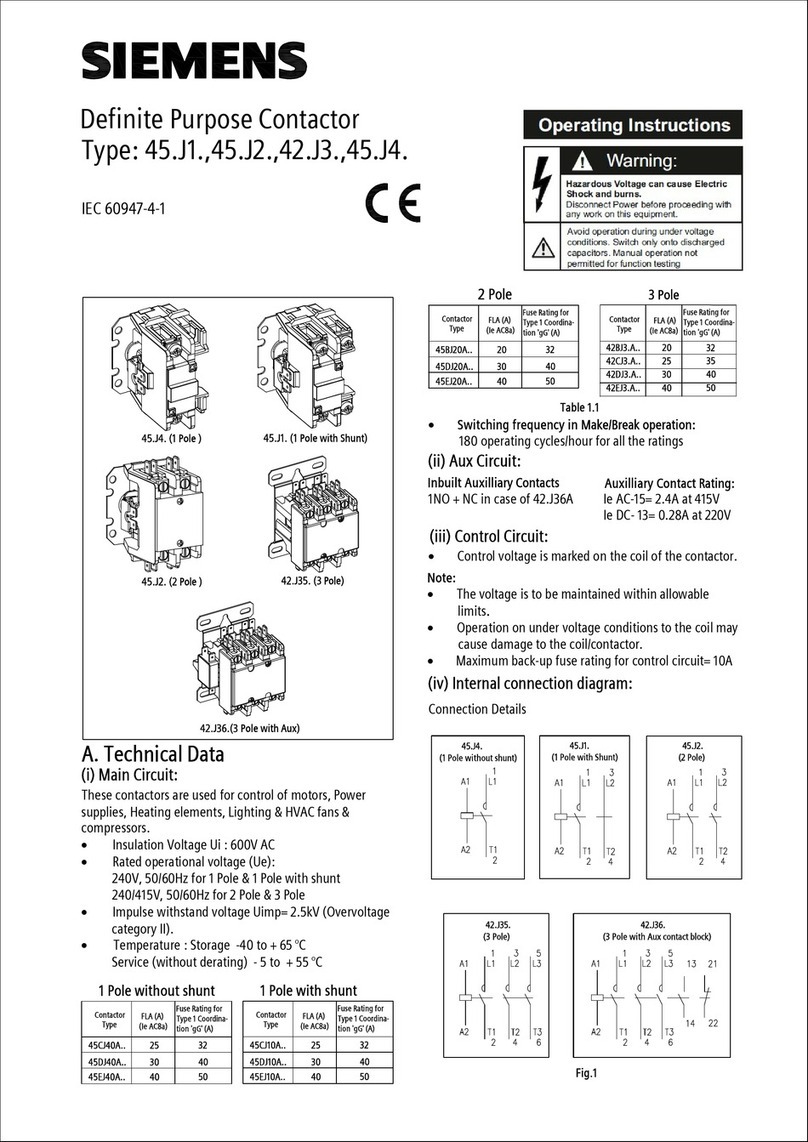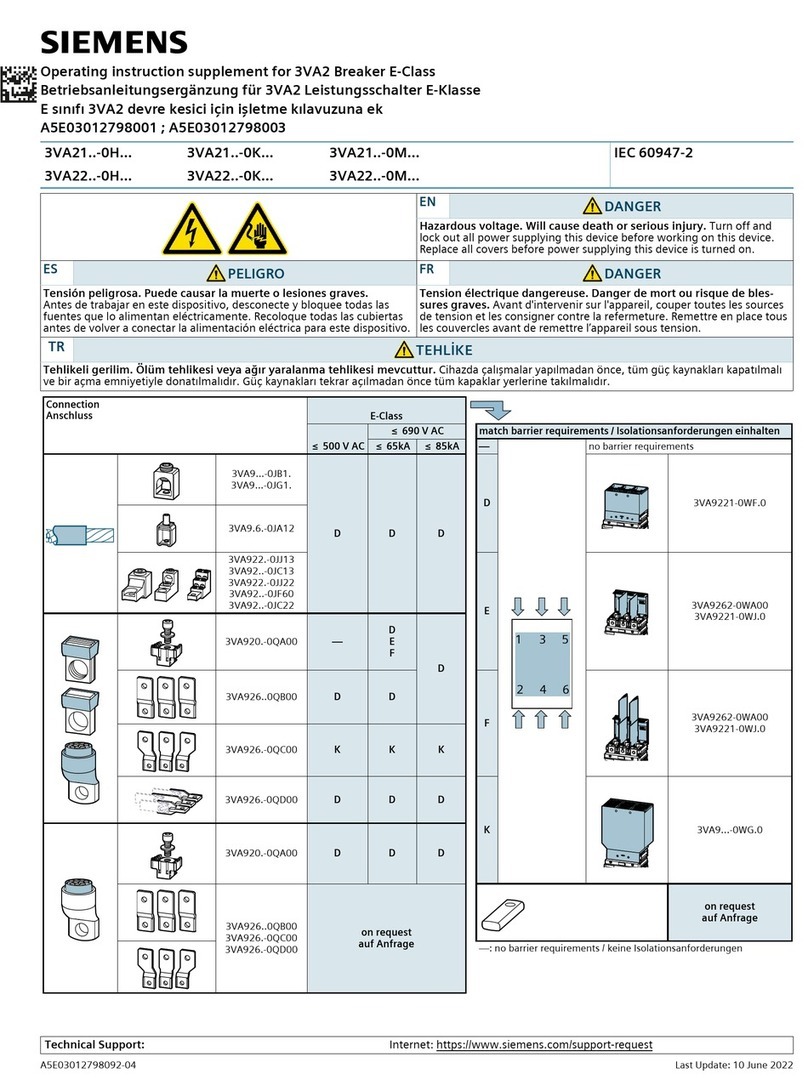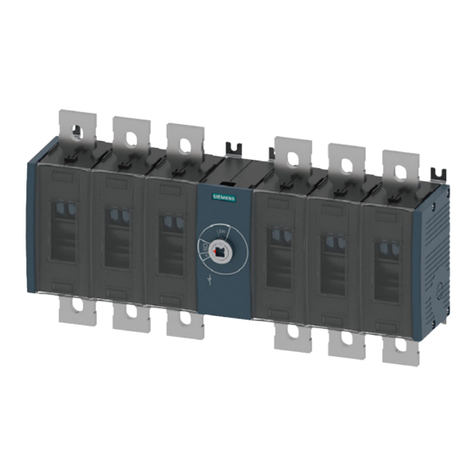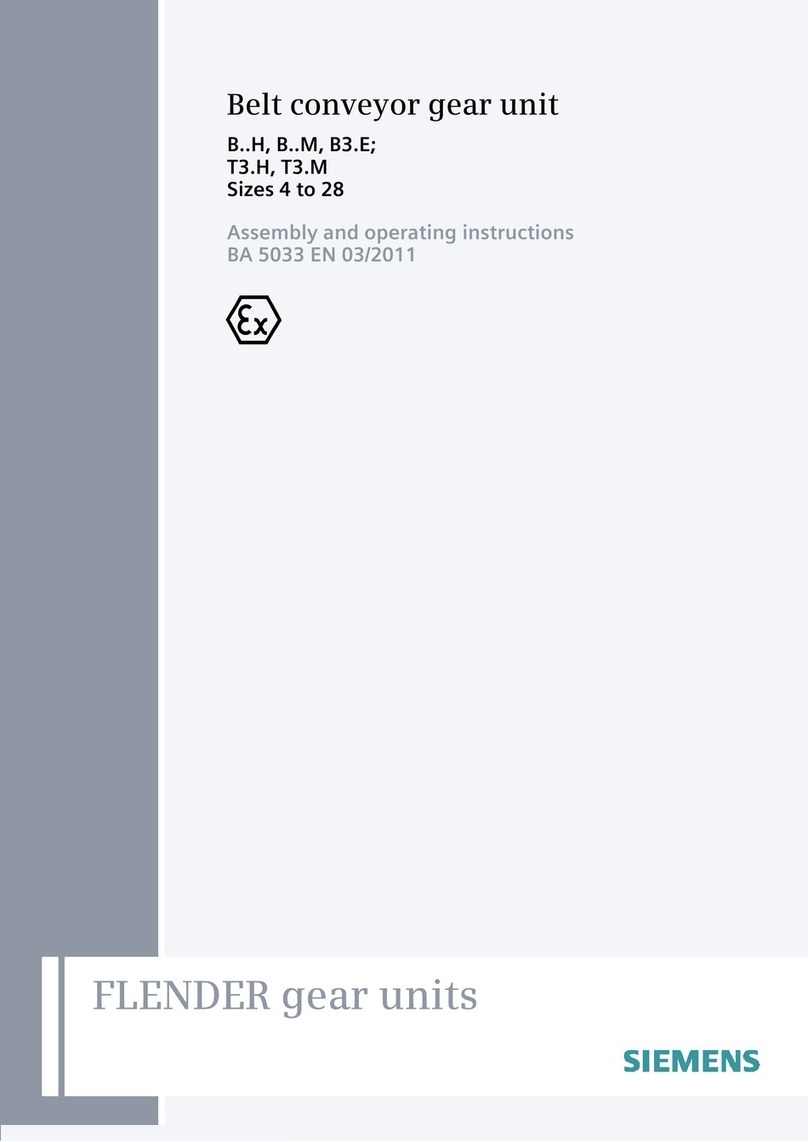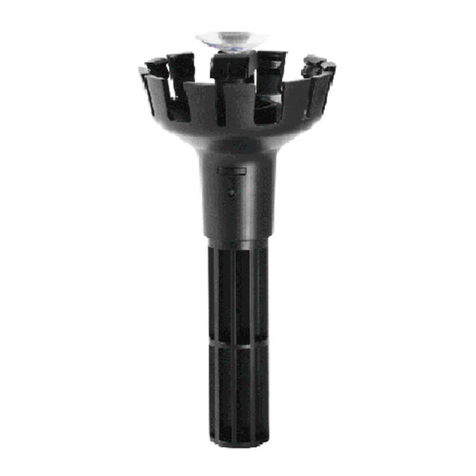
13
Siemens Schweiz AG A6V11646018_en--_k
Smart Infrastructure 2023-02-27
Conformity
Ambient conditions and protection classification
Classification as per EN60730
Automatic action
Control function
Pollution degree
Overvoltage category
Type 1
Class A
2
III
Protection against electric shock Suitable for use in protection class I or II systems
Protection degree of housing to EN 60529
Front parts in DIN cut-out
Terminal part
IP30
IP20
Climatic ambient conditions
● Storage / Transport (packaged for transport) as per
IEC EN 60721-3-1 / IEC EN60721‑3‑2
● Operation as per IEC/EN 60721-3-3
● Class 1K22 / 2K12
Temperature -25...70°C (-13...158°F)
Air humidity 5...95% (non-condensing)
● Class 3K23
Operation in enclosed dry locations, having no
temperature or humidity control
Temperature -5...50°C (23...122°F)
(for details see chapter Mounting)
Air humidity 5...95% (non-condensing)
Mechanical ambient conditions
● Transport per IEC/EN 60721-3-2
● Operation as per IEC/EN 60721-3-3
● Class 2M4
● Class 3M11
Standards, directives, and approvals
Product standard IEC/EN 60730-1
Product family standards IEC/EN 63044-x
Electromagnetic compatibility (EMC) For residential, commercial, and industrial environments
EU conformity (CE) See CE declaration 1)
EAC conformity Eurasian compliance
RCM conformity See RCM declaration 1)
UL/cUL certification (US / Canada) UL916, http://ul.com/database
CSA certification C22.2, http://csagroup.org/services-industries/product-
listing
FCC CFR 47 Part 15C
BACnet B-BC
AMEV profile (BACnet 2017) AS-B
KBOB profile (BACnet 2017) AS-CH
Environmental compatibility 1) The product environmental declaration 1) contains data
on environmentally compatible product design and
assessments (RoHS compliance, materials
composition, packaging, environmental benefit,
disposal).
1) Documents can be downloaded at www.siemens.com/bt/download.
European Union conformity
Contact for regulatory topics: (EU) SiemensAG, Berliner Ring23, DE-76437Rastatt
FCC Statement
This equipment has been tested and found to comply with the limits for a Class B digital
device, pursuant to part 15 of the FCC Rules. These limits are designed to provide
reasonable protection against harmful interference in a residential installation. This
equipment generates, uses and can radiate radio frequency energy and, if not installed and
used in accordance with the instructions, may cause harmful interference to radio
communications. However, there is no guarantee that interference will not occur in a
